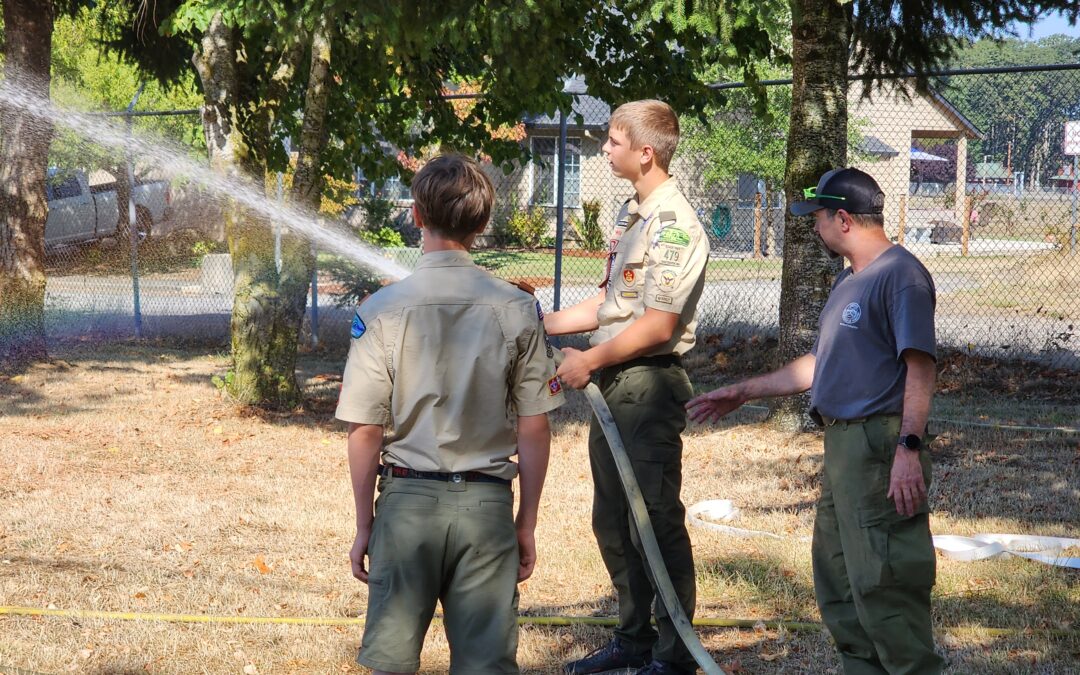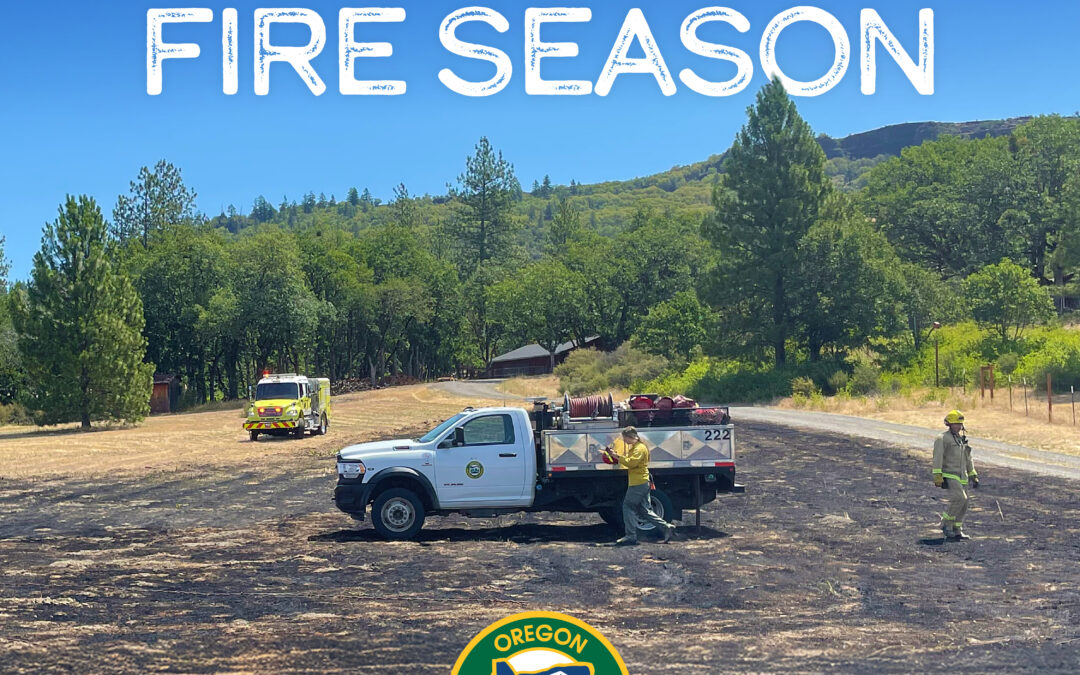
October 22, 2025
Stayton, Ore. – Every Saturday over the last month, the Oregon Department of Forestry’s (ODF) North Cascade District hosted Scouting America troops from Eugene, Oregon to Seattle, Washington and in between. The district helped 80 scouts earn their Wildland Fire Management merit badge, a new merit badge being tested this year with the hopes it will become an official merit badge next summer at the National Jamboree.
“The scouts learned that it’s more than putting out a fire,” said Scott West, ODF Molalla Unit Forester for the North Cascade District.
In the classes, scouts, ages 11-17, learned how to make their homes, camps, and communities more wildfire resilient and resistant while also understanding wildfire’s role in nature. They also learn about the history, prevention, science, tools, and equipment of wildland fire management. The new merit badge gives the scouts the opportunity to explore different career opportunities in wildland fire management.
“I wanted kids to see the larger picture when it comes to wildfire and learn what they can do in terms of that picture,” said West. “By the end of the course, we even had a few 17-year-olds interested in applying to be a wildland firefighter once they graduate.”
The investment in wildland firefighting’s future doesn’t just encompass this one month but years of work. Scott West not only facilitated the courses in ODF’s North Cascade District but also helped create the curriculum for the new merit badge with Scouting America, a process that began in 2018.
“When on an assignment with ODF Complex Incident Management Team 2 in 2017, I met Mike Huneke with the U.S. Forest Service out of Maryland. Mike is also a volunteer with Scouting America and chairs the National Conservation Committee. We discussed the need for a merit badge that focuses on wildland fire management and the impact a merit badge like this could have on our field’s future. So together we built out the curriculum, presented it to Scouting America and now get to see the finished product in action right here in Oregon,” West said.
Understanding and managing wildland fire is a complex undertaking, especially for young scouts, but their willingness to learn and explore the field of wildland fire management means that the future of the career is bright.

October 17, 2025
Salem, Ore.—Today, all Oregon Department of Forestry districts have terminated fire restrictions, marking the end of the 2025 Oregon fire season declaration.
“Oregon’s fire agency leadership, local communities and wildland firefighters have closed out this wildfire season with unmatched skill, coordination, and determination. Our state’s wildland firefighters set the standard here, nationally, and internationally. Thank you for your courage and selfless commitment to safeguarding this state and our communities year after year.” said Governor Tina Kotek.
“Through aggressive initial attack and the dedication of our firefighters, we had a season with significantly fewer acres burned compared to last year even with more fire starts,” said Kyle Williams, ODF Deputy Director of Fire Operations. “This year had the potential to be similar to last year, but ODF firefighters showed up every single day to make sure that did not happen.”
Combined, lightning-and human-caused fire brought roughly 100 more fire starts on ODF-protected land compared to 2024 fire season. In response, the departments protection districts and division took on the challenge.
“Due to the agency’s aggressive approach to initial attack to preserve natural resources, protect communities, and increase firefighter safety, many fire starts that happened this year were never heard about,” said Michael Curran, ODF Fire Protection Division Chief. “In 2025, 94 percent of fires on ODF-protected lands were put out at 10 acres or fewer.”
Year to date, there have been 1,135 fires on ODF-protected lands resulting in 24,275 acres burned. ODF Complex Incident Management Teams (CIMT) have been mobilized six times to wildfires this year. The assignments were to the following incidents:
- Rowena Fire
- Elk Fire
- Marks Creek Fire
- Grizzley Complex
- Flat Fire
- Kelsey Peak Fire
Statewide to date, regardless of jurisdiction, there have been 2,569 fires that have burned 288,774 acres.
The start and end of fire season restrictions and regulations are set by each forest protection district based on the conditions in their area including drought, climatic forecasts, and seasonal trends. These restrictions and regulations are on activities prone to start wildfires, such as debris burning and certain equipment use, and are intended as preventative measures during times with elevated wildfire risks. The arrival of steady soaking rain, coupled with cooler temperatures and shorter days, usually triggers the closure of fire season.
The end of fire season removes ODF imposed fire restrictions on ODF-protected lands. However, many structural fire departments in Oregon still require a permit for debris burning, and slash burning requires a permit year-round, so check with your local fire department or ODF office before starting a burn.
As Oregon transitions to fall and winter, ODF districts across the state are shifting their attention to wildfire prevention, fuels reduction, mitigation and planning efforts.
For more tips on how to keep yourself, your loved ones and your property safe from wildfire at any time of year, visit ODF’s Fire Prevention website or Keep Oregon Green’s website.


